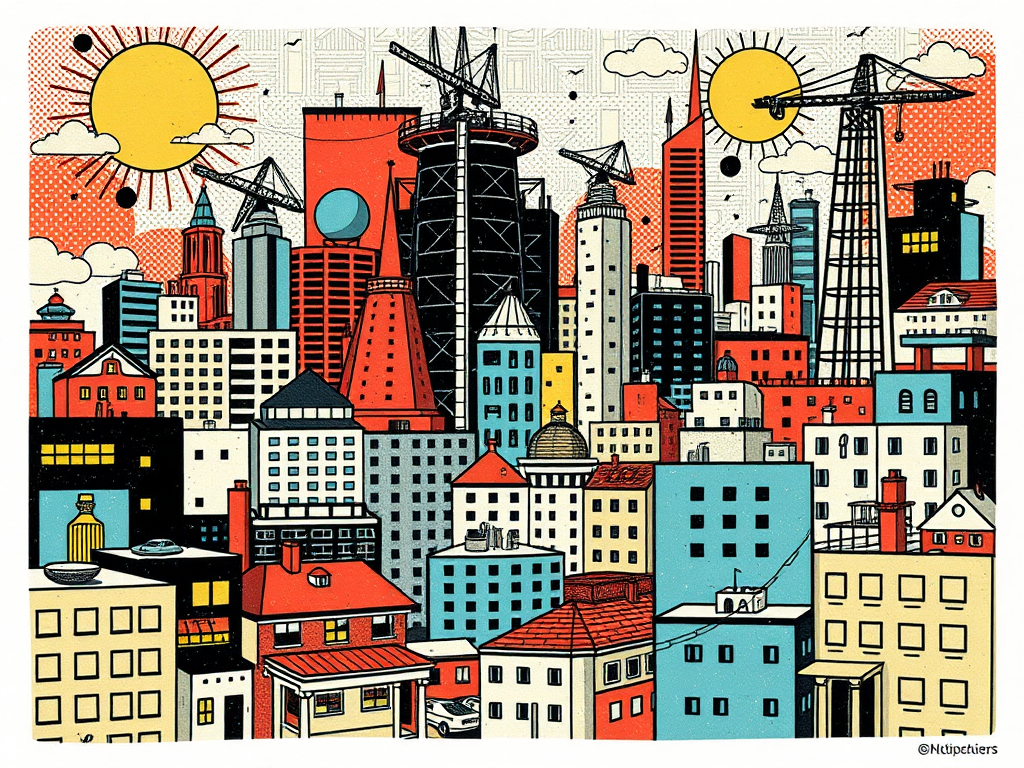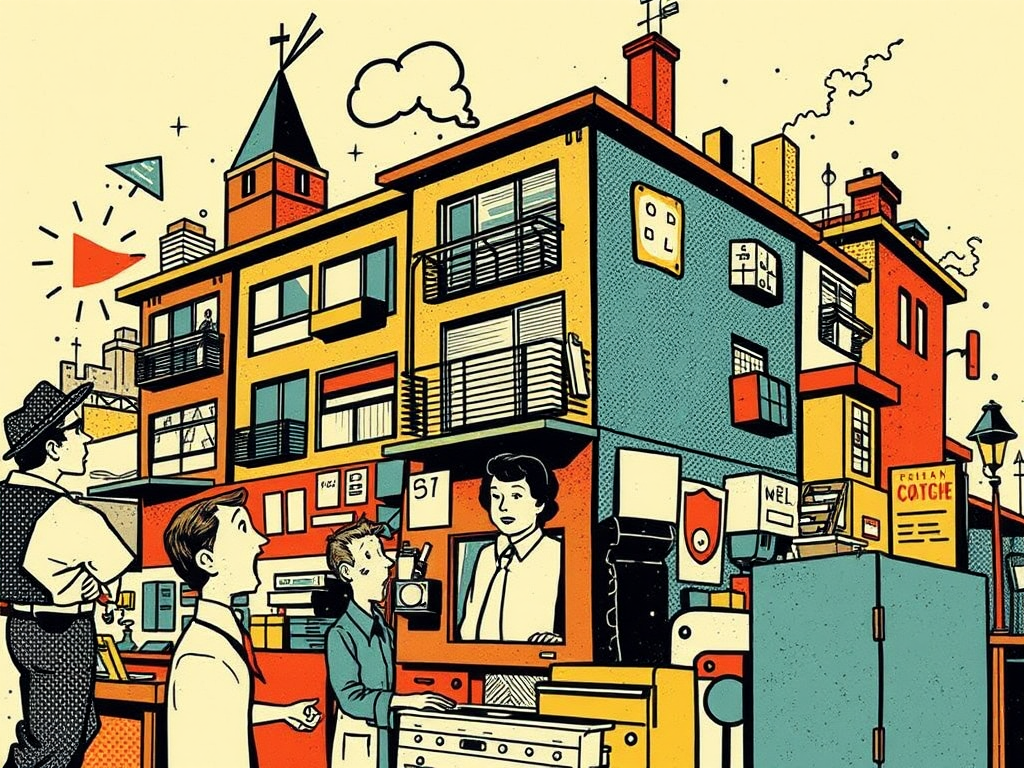Upcoming Mega-Projects: How New Airports, Roads, and Malls Affect Property Values

Upcoming Mega-Projects: How New Airports, Roads, and Malls Affect Property Values
Reading time: 15 minutes
Table of Contents
- Introduction
- The Impact of Infrastructure on Real Estate
- Airports: Catalysts for Economic Growth
- Road Networks: Connecting Communities and Markets
- Shopping Malls: Redefining Urban Landscapes
- Case Studies: Mega-Projects and Property Value Shifts
- Investment Strategies in Light of Upcoming Mega-Projects
- Challenges and Considerations
- Conclusion
- FAQs
Introduction
In the ever-evolving landscape of real estate and urban development, mega-projects stand as monumental drivers of change, reshaping not only the physical environment but also the economic fabric of regions. As we delve into the intricate relationship between these large-scale infrastructural developments and property values, we uncover a complex interplay of factors that savvy investors and homeowners alike must navigate.
This comprehensive analysis will explore how upcoming airports, expansive road networks, and state-of-the-art shopping malls are poised to transform property markets. We’ll examine the ripple effects these projects create, from immediate localized impacts to broader regional economic shifts, providing you with the insights needed to make informed real estate decisions in an era of rapid development.
The Impact of Infrastructure on Real Estate
Infrastructure development has long been recognized as a cornerstone of economic growth and urban expansion. The relationship between new infrastructure and property values is multifaceted, often characterized by a symbiotic dynamic where improved accessibility and amenities drive up demand for surrounding real estate.
Key Factors Influencing Property Values
- Accessibility: Enhanced transportation links can dramatically reduce commute times and improve connectivity to urban centers.
- Economic Growth: Major projects often attract businesses, creating job opportunities and stimulating local economies.
- Quality of Life: New amenities and services can significantly enhance the desirability of an area for residents.
- Future Development Potential: The anticipation of continued growth can drive speculative investment and price appreciation.
As we analyze specific types of mega-projects, it’s crucial to consider these factors and how they interplay in different contexts.
Airports: Catalysts for Economic Growth
New airports represent some of the most impactful infrastructure projects in terms of their ability to transform regional economies and property markets. The introduction of an airport can create a nexus of economic activity, spawning new business districts, logistics hubs, and hospitality sectors.
Property Value Dynamics Near Airports
The effect of airports on nearby property values is nuanced. While proximity to an airport can boost commercial real estate values, residential properties may experience mixed effects:
- Positive Impacts: Increased job opportunities, improved transportation links, and economic growth can drive up demand for housing in the broader region.
- Negative Factors: Noise pollution and increased traffic may depress values in immediate vicinities.
- Long-term Trends: Over time, the economic benefits often outweigh initial drawbacks, leading to overall appreciation in a wider radius around the airport.
Investors should carefully consider the specific location and type of property when evaluating opportunities near new airport developments.
Road Networks: Connecting Communities and Markets
Expansive road projects, including highways, bridges, and urban arterials, play a crucial role in shaping property values by altering accessibility patterns and opening up new areas for development.
The Ripple Effect of Road Infrastructure
New road networks can have far-reaching impacts on property markets:
- Suburban Growth: Improved connectivity can make outlying areas more attractive for residential development, potentially leading to rapid suburbanization.
- Commercial Corridors: New roads often spawn commercial strips and logistics centers along their routes.
- Land Value Appreciation: Areas that become more accessible often see significant increases in land values, sometimes well in advance of actual construction.
The strategic placement of road infrastructure can reshape urban growth patterns and create new hotspots for real estate investment.
Shopping Malls: Redefining Urban Landscapes
Modern shopping malls are evolving beyond mere retail spaces to become integrated lifestyle centers, incorporating entertainment, dining, and even residential components. These developments can have profound effects on surrounding property values.
The Mall Effect on Local Real Estate
The introduction of a major shopping mall can transform local real estate markets in several ways:
- Retail Synergy: Surrounding areas often see an influx of complementary businesses, boosting commercial property values.
- Residential Desirability: Proximity to shopping and entertainment can increase demand for nearby housing.
- Urban Renewal: Malls can serve as anchors for broader urban redevelopment initiatives, lifting property values across entire neighborhoods.
However, it’s important to note that the impact of malls can vary based on local market conditions and the specific nature of the development.
Case Studies: Mega-Projects and Property Value Shifts
To illustrate the real-world impacts of mega-projects on property values, let’s examine several case studies from around the globe:
1. Dubai World Central and Al Maktoum International Airport
This massive airport development in Dubai has been a key driver of real estate growth in the surrounding areas. Properties in nearby communities like Dubai South have seen significant appreciation, with some areas experiencing double-digit growth rates in recent years.
2. Hong Kong-Zhuhai-Macau Bridge
This 55-kilometer bridge and tunnel system has dramatically reduced travel times between these major cities, leading to increased property values in western Hong Kong and parts of Macau. Some areas have seen price increases of up to 15-20% since the bridge’s completion.
3. Mall of America Expansion (Minneapolis, USA)
The ongoing expansion of America’s largest mall has continued to bolster property values in Bloomington, Minnesota. Residential properties within a 5-mile radius have consistently outperformed the broader Minneapolis market in terms of appreciation rates.
Investment Strategies in Light of Upcoming Mega-Projects
For investors looking to capitalize on the potential of upcoming mega-projects, consider the following strategies:
- Early Identification: Research and identify areas slated for major infrastructure developments before they become widely known.
- Diversification: Spread investments across different property types to balance potential risks and rewards.
- Long-term Perspective: Many mega-projects take years to complete; be prepared for a longer investment horizon.
- Local Market Analysis: Understand the specific dynamics of local markets, as impacts can vary significantly based on existing conditions.
- Risk Assessment: Carefully evaluate potential downsides, such as project delays or changes in government policy.
One interesting option for investors looking to diversify internationally is to buy home in greece, where ongoing infrastructure improvements and a recovering economy present unique opportunities.
Challenges and Considerations
While mega-projects often present significant opportunities, they also come with challenges that investors and homeowners should be aware of:
Environmental Impacts
Large-scale developments can have substantial environmental consequences, which may affect long-term property values and quality of life in surrounding areas. Sustainable design and mitigation strategies are becoming increasingly important factors in project planning and execution.
Gentrification and Displacement
Rapid property value appreciation can lead to gentrification, potentially displacing long-term residents and altering the character of neighborhoods. This social impact should be considered when evaluating the overall effects of mega-projects on communities.
Project Delays and Cost Overruns
Many large infrastructure projects face delays and budget issues, which can impact expected timelines for property value appreciation. Investors should factor in potential setbacks when developing their strategies.
Changing Urban Dynamics
The COVID-19 pandemic has altered work patterns and urban migration trends. The long-term implications of these shifts on the effectiveness of mega-projects in driving property values remain to be seen.
Conclusion
The relationship between upcoming mega-projects and property values is complex and multifaceted. While new airports, road networks, and shopping malls have the potential to significantly boost real estate markets, the impacts are neither uniform nor guaranteed. Savvy investors and homeowners must conduct thorough research, consider long-term trends, and remain adaptable to changing conditions.
As we look to the future, the integration of sustainability principles and smart city technologies into mega-projects will likely play an increasingly important role in determining their impact on property values. Those who can anticipate these trends and position themselves accordingly stand to benefit the most from the transformative power of large-scale infrastructure developments.
Ultimately, the key to success lies in a nuanced understanding of how these projects interact with local economic, social, and environmental factors. By staying informed and approaching opportunities with a balanced perspective, investors can navigate the exciting yet challenging landscape of real estate in the age of mega-projects.
FAQs
1. How far in advance of a mega-project’s completion should I consider investing in nearby properties?
Answer: The ideal timing can vary, but generally, investing 3-5 years before project completion can offer the best balance of risk and potential reward. This timeframe often allows for appreciation as anticipation builds, while still providing a reasonable investment horizon.
2. Are there any specific types of properties that tend to appreciate more near new airports?
Answer: Commercial properties, particularly those related to logistics and hospitality, often see the highest appreciation near new airports. Residential properties may appreciate more in areas slightly further from the immediate vicinity of the airport, balancing accessibility with quality of life considerations.
3. How can I assess the potential negative impacts of a mega-project on property values?
Answer: Research environmental impact assessments, community feedback, and historical data from similar projects. Pay attention to factors like noise pollution, traffic congestion, and potential for overdevelopment. Consulting with local real estate experts and urban planners can also provide valuable insights.
4. What role do government policies play in the success of mega-projects and their impact on property values?
Answer: Government policies are crucial in shaping the outcomes of mega-projects. Favorable zoning laws, tax incentives, and infrastructure support can significantly enhance a project’s positive impact on property values. Conversely, regulatory hurdles or lack of supporting policies can hinder development and limit appreciation potential.
5. How might the trend towards remote work affect the impact of mega-projects on property values?
Answer: The shift towards remote work could potentially reduce the impact of some transportation-focused mega-projects on property values, as proximity to urban centers becomes less critical. However, it may also increase the importance of lifestyle amenities and quality of life factors, potentially boosting the value of properties near well-designed shopping and entertainment complexes.

Article reviewed by Sophia Georgiadou, Global Expansion Consultant | Market Entry Strategist | Breaking Into Emerging Markets with Tailored Localization Plans, on May 15, 2025




